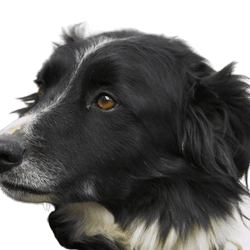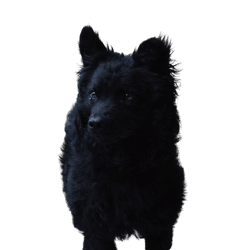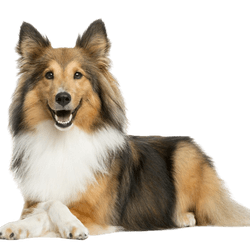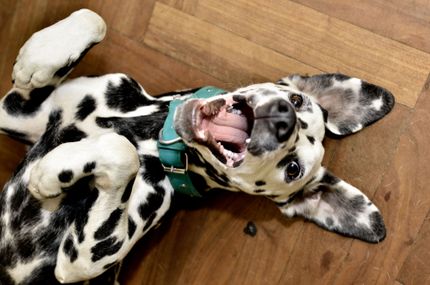
Scottish terrier Breed description: Character & Co
Scottish terrier
Facts & Origin
The origin of the Scottish Terrier
In Scotland, terriers are an extremely popular dog breed. The Scottish Terrier is no exception. The robust dog is mentioned as early as the 18th century, but at that time it was far from meeting today's standards for the breed. It is assumed that his ancestors come from the Highlands and the county of Perthshire. Like so many dogs, the "Scottie" was bred for hunting, for which the breed needed a correspondingly strong bite, long legs and lots of muscle. If you meet a Scottie today, he will have much shorter legs than in those days. The current standard of the breed originated around 1850 in the Aberdeen area. So the first name "Aberdeen Terrier" is no coincidence. Since 1879, terriers have been shown at exhibitions, which led to rapid popularity even beyond the country's borders. In the first decades of the 20th century, the breed thus quickly became a fashionable dog. Their popularity even took them as far as the White House. Presidents like Roosevelt or George W. Bush were proud owners of the black, Scottish four-legged friends. Until today you can meet these dogs most often in Great Britain and also in the USA.
Alternative name: Scottie, Aberdeen Terrier
Origin: Great Britain
Life expectancy: 12 - 14 years
Care requirements: easy to care for
Activity level: medium
FCI Breed Standard Number 73, Group 3, Section 2 Low-legged Terrier without working test
AKC Recognized
KC Recognized
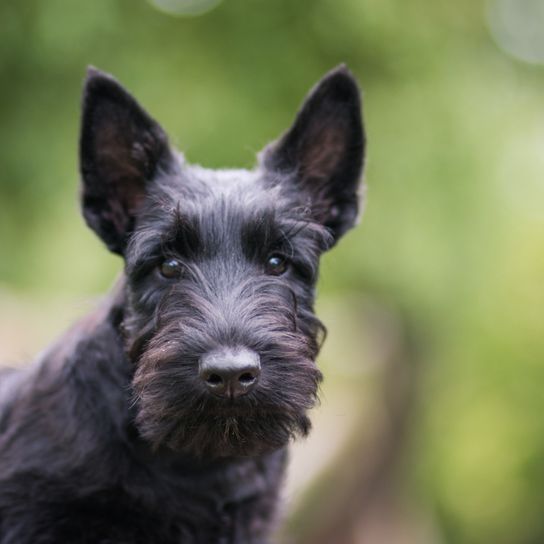

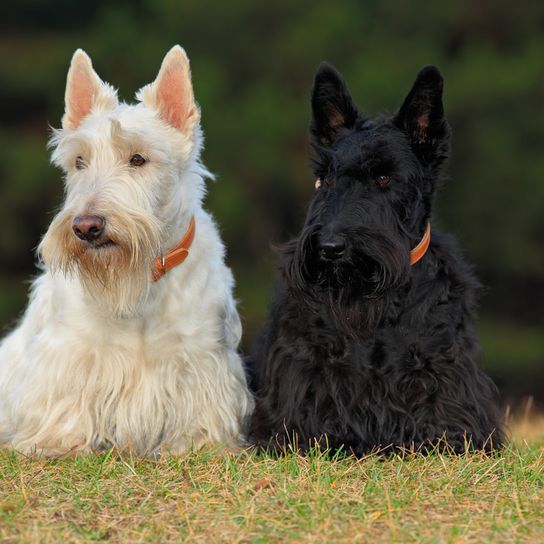

| Alternate Name | Scottie, Aberdeen Terrier |
| Origin | Scotland |
| Life expectancy | 10 - 12 years |
| Care requirements | high-maintenance |
| Activity level | average |
| FCI group | Small sized Terriers |
| AKC group | Terrier Group |
| KC group | Terrier Group |
Attitude, character and temperament of the breed
The character of the Scottish quadruped
- willing to work
- intelligent
- alert
- barks little
- courageous
- child-friendly
- faithful
- reliable
If you are looking for a loyal and reliable companion dog at your side, who is also alert, you are exactly right with the Scottie. You can still see the former use as a hunting dog on your dog. He is courageous and a four-legged dog with a lot of character. His stubbornness should be controlled with calm consistency. As fearless and courageous as the terrier is, he is also gentle and friendly towards his loved ones. This also applies to children. Towards strangers he is rather reserved, but does not attract attention by yapping. It is important to keep the intelligent and hard-working four-legged friend busy. Agility training and obedience (obedience exercises) are just the thing for this robust little dog.
Character
Usage


Health and breeding information
The health of a Scottish Terrier
The Scottish Terrier tends to have elevated levels of liver, especially alkaline phosphatase, at an older age of 7 years or older. In most cases, however, this does not indicate serious liver disease. The dogs nevertheless reach a normal age. Bladder cancer, however, is up to ten times more common in this breed than in other breeds. This is mainly attributed to genetic causes. Research is underway to isolate the relevant gene. Kittens rarely struggle with cranio-mandibular osteopathy, a distinctly painful disease of the cranial bones. A genetic test to rule out the disease has been available for several years.
The breeding of the Scottish Terrier
In Germany the Scottie is less known than in the USA or Great Britain. Nevertheless, there are currently 17 breeders registered in the German Kennel Club. Already in 1894 the Terrier Club was founded in Germany. Until today almost 70,000 Scottish Terriers have been registered in its stud book. The FCI recognized the robust quadruped as early as 1954.


The characteristics of the Scottish Terrier
The Scottie is compactly built and with its short legs it hardly grows more than 25 cm high. The elongated head is an absolute feature of this breed and is sure to catch your eye immediately, if only because of its large, pointed ears. The dog also has a pronounced beard. Its tail stands erect over the body with its soft and short undercoat. The top coat is rather wiry and harsh. Thus, the Scottish Terrier has a water-repellent coat that protects it well in the Scottish weather. Regular trimming is necessary for the Scottie's breed appearance, but also so that the coat can retain its weatherproofing. There is little that is harsh about a Scottish Terrier. For the most part, Scotties are black, but sometimes the companion dogs come in a wheaten or brindle variety. When you trim your Scottish terrier, the fur on the top of the torso is usually clipped short. Under the belly, the Scottie usually carries a long curtain, which gives him his characteristic look.
Coat length: medium to long
Coat: coarse
Ear shape: prick ears
Tail: erect, short
Anatomy: short, muscular, stocky
Size 25 to 28 cm
Weight 8 - 10 kg
Suitable for families, dog owners with time
| Fur length | long |
| Fur | flat coated |
| Ear shape | Standing Ears |
| Tail | short |
| Anatomy | muscular, rugged, square |
| Size ♀ | 23 - 28 cm |
| Weight ♀ | 7 - 9 kg |
| Size ♂ | 25 - 28 cm |
| Weight ♂ | 8 - 10 kg |
| Suitable For | Children, Seniors |
Colors




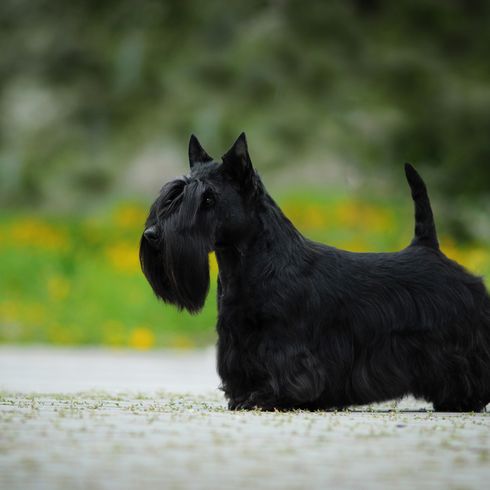

Known Diseases
Cancer
May be common in older dogs.
Other medium dogs
Useful Articles
You can find articles that might interest you in the dogbible blog to match your favorite breed.
Visit our magazineto stay up to date on dog trends.
To find out more, view our Privacy Policy
Find here the breed that suits you and find out what character traits it has. Here you can also learn more about the origin, size and weight of your favorite breeds.
Matching your favorite breed, you'll find articles that might interest you on the dogbible dog blog.
Advantages of pedigree dogs to mongrel dogs
Capturing special moments with your four-legged friend - ideas and implementation


